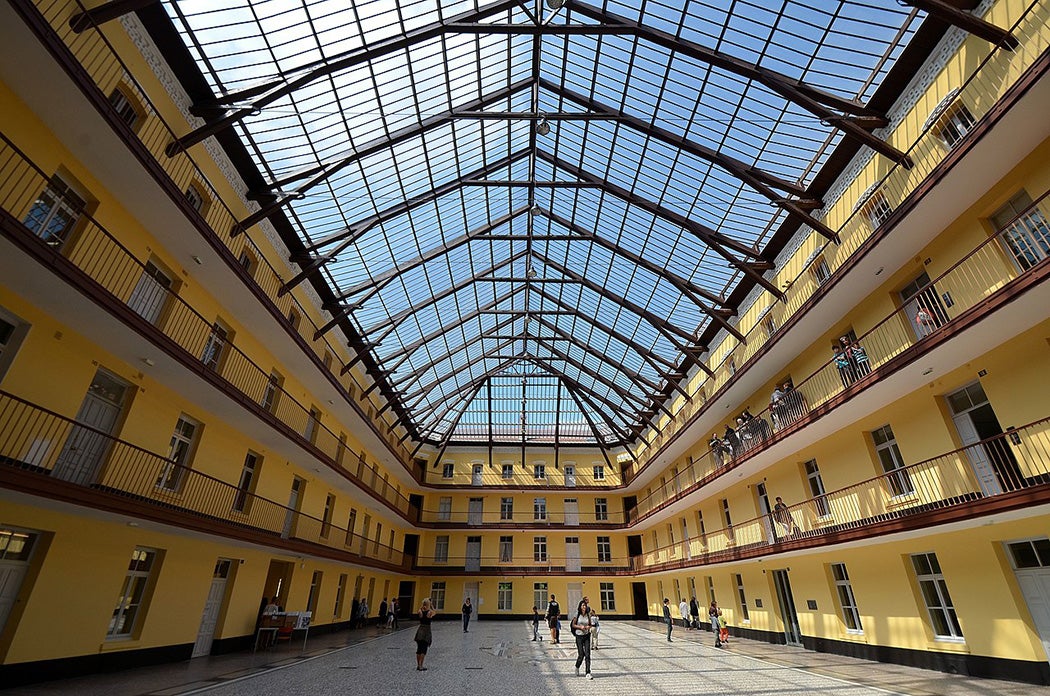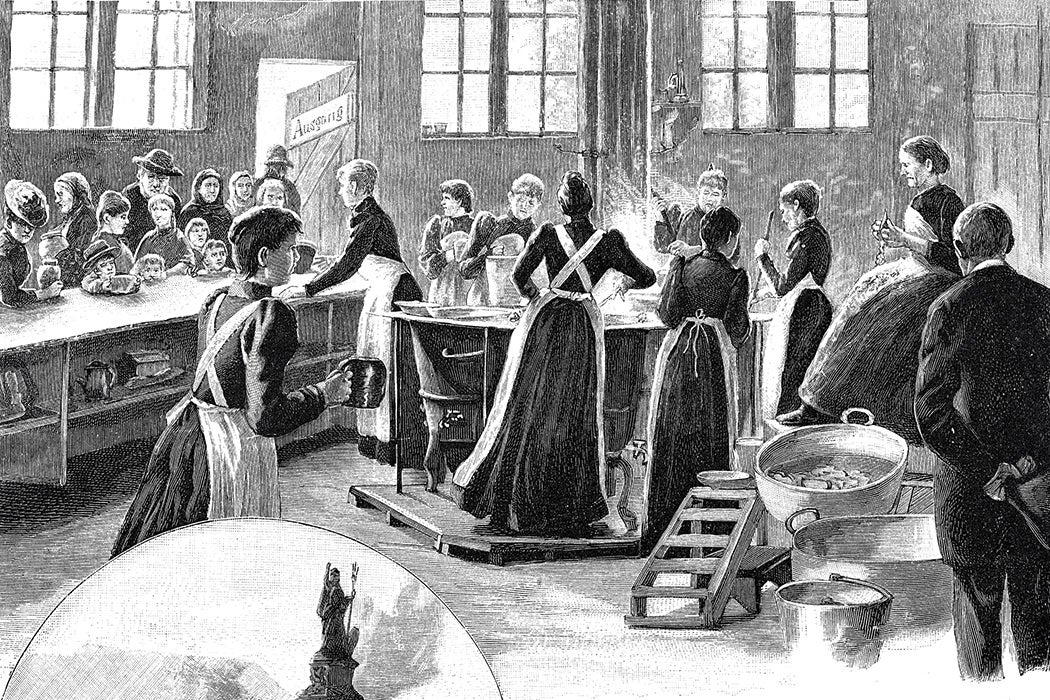Imagine a home without a kitchen. Today, cooks might be appalled, delivery app addicts blasé, but the kitchenless home isn’t a new idea. Nineteenth-century American feminists were notable proponents of incorporating collective, communal kitchens into communities large and small to rescue women from the “wear of patience, time, bone and muscle” that it took to put a meal on the table.
This description of the effort needed for the cooking component of domestic work—to say nothing of the laundry, cleaning, and child-rearing—is from Jane Sophia Appleton in 1848, as quoted by scholar Dolores Hayden. Appleton predicted that domestic arrangements one hundred and thirty years in the future would no longer include the “‘roasted lady’ at the head of the dinner table,” exhausted and ash-streaked from laboring over the stove.
Cooking, cleaning, laundry, and child-care were all tasks utopian thinkers and practitioners attempted to collectivize—while in conventional society, the middle and upper classes shunted such tasks to the the daughters of the less-well-off. (Domestic service was the leading female occupation in the US and Britain until after WWI. In 1900, for example, a live-in Chicago servant earned $2.75 a week, with room and board, while working 15-hour days.)
“American women,” writes Hayden, “have designed many utopias, usually to insist that utopian socialist communities be constructed as socialist, feminist ones.”
The careers of Marie Stevens Howland and Alice Constance Austin exemplify this. Between 1874 and 1917, these two women drew up and promoted “innovative architectural conceptions for domestic reform in their plans for utopian cities of Topolobampo, Mexico, and Llano del Rio, California.”
While these under-financed utopian projects dissolved “before extensive construction could take place,” both Howland’s and Austin’s large-scale plans “dealt with some of the major issues of twentieth-century urban and suburban life.” Their work provides “important evidence of the contacts between communitarian socialists and feminist activists creating cooperative housekeeping projects in cities and suburbs in the United States and England.”
Such ideas were certainly in the air. People tried and sometimes succeeded in setting up cooperative dining kitchens, dining clubs, and laundries in middle class neighborhoods. “Unitary Homes” or “Combined Households,” run on socialist, free love, and/or religious lines, popped up here and there. The short-lived Cambridge Massachusetts Cooperative Housekeeping Society (store, laundry, bakery) was set up near Harvard Square in 1869.

In the 1860s, Howland actually lived in the Charles Fourier-inspired Familistere or Social Palace in Guise, France. There, centrally-heated apartments housed 350 iron-foundry workers and their families. The Familistere included extensive day-care facilities and a cooked food service. (Fourier, a noted critic of the private home, argued that “the development of a society can best be judged by examining the position of women within it.” For Fourier and his followers, “the socialization of domestic work was essential to improving women’s status.”)
Weekly Newsletter
Howland’s designs for Topolobampo and her fictional account of a New England Familistere were precedents for Edward Bellamy’s best-selling Looking Backward: 2000–1887 (1888). Bellamy’s future Boston “popularized the ideal of a city of kitchenless apartment houses and collectively run kitchens in the year 2000” and inspired various patents and projects, including Ebenezer Howard’s thirty-two cooperative house units in England. Charlotte Perkins Gilman’s best selling Women and Economics (1898) also marked her as an influential supporter of “collective domestic work.”
Alice Austin, inspired by both Howard and Gilman, joined Socialist Party stalwart Job Harriman around 1915 to build a commune at Llano del Rio (now called Llano) on the edge of Los Angeles County. This didn’t last long—local ranchers, for one, opposed them over access to water. Some of the communards resettled in New Llano, Louisiana, but Austin set up an LA architectural practice, trying to incorporate her ideas into smaller, more realizable projects.
Hayden concludes that the “burden of isolated domestic work in the private household remains an economic and architectural problem for women in all societies.”







